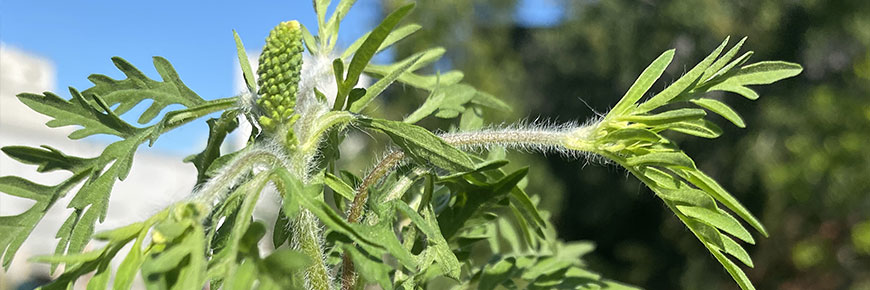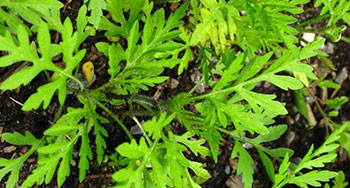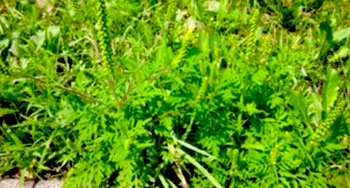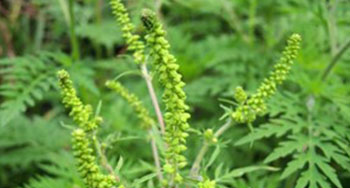
Ambrosia artemisiifolia/trifida
Ragweed
Chambly Canal National Historic Site
Description
Ragweed (ambrosia artemisiifolia/trifida) is an annual plant that is widespread in Quebec and known to be responsible for allergic rhinitis, which is also called hay fever. It is mostly found in poor soil, mainly along streets and sidewalks and on paved road shoulders, vacant lots, construction areas and industrial lands. It appears in the spring as early as May and lasts until the first fall frost.
In southern Quebec, ragweed usually goes into bloom around late July or early August, at which point it will release large amounts of pollen into the air. Wind-aided, this pollen will have an allergenic impact within a radius of about 1 km.
How to recognise ragweed
The main identifying characteristics of ragweed are as follows:
- hairy, greyish green stem
- inflorescence of yellowish green spikes at the top of the plant
- height varying from 10 cm to 1.5 m
- very ragged foliage resembling that of carrots



Allergic rhinitis (hay fever)
In Quebec, one in five people suffer from allergic rhinitis caused by various trees, shrubs and herbaceous plants. The symptoms are as follows:
- nasal congestion
- clear and heavy nasal discharge
- repeated sneezing
- headache
- tingling and itching of the nose, throat and ears
- signs of conjunctivitis, including itchy eyes, swollen eyelids and eye redness
- worsening of asthma
How to reduce symptoms
- Avoid ragweed-infested areas and, when that is not possible, wear a single-use disposable filter mask.
- Avoid outdoor activities, particularly those that facilitate pollen dispersal (mowing the lawn, raking leaves), especially between 7 a.m. and 1 p.m. on hot, dry and windy days.
- Avoid drying clothes outdoors.
- Keep windows closed, if possible, to prevent pollen from entering the house and use an air filtration system, taking care to clean the filters regularly.
- Learn to recognize the plant in order to eliminate it from surroundings.
Ragweed management
- Pull ragweed before the pollination period.
- Mow or cut ragweed twice a year, in mid-July and mid-August, to prevent it from flowering and reduce the amount of pollen in the air.
- On your property, pull, cut or mow ragweed as soon as you see it.
- Prevent plants from growing by:
- covering the soil with mulch;
- improving soil quality with compost or fertilizer;
- seeding with other plants such as clover or grass (ragweed does not compete well).
Related links
- Date modified :